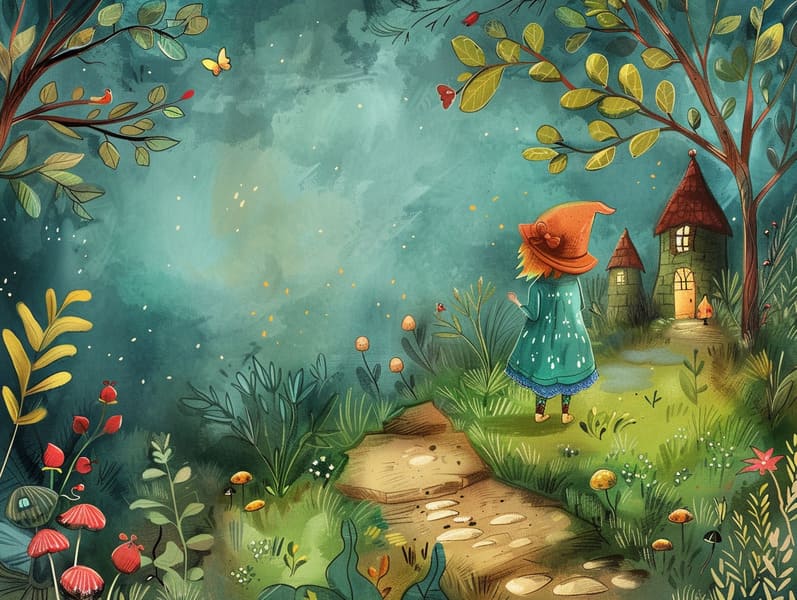The Genesis of Ancient Fairy Tales with Its Unceasing Grandeur.
The Genesis of Ancient Fairy Tales with Its Unceasing Grandeur.
Blog Article

Historical fairy tales have legendary status. These tales have been spoken from one generation to the next far before they were ever transcribed. They developed from a variety of backgrounds, including American traditions. They were initially told among grown-ups, often carrying themes and messages related to the societal norms and beliefs of the time.
The Brothers Grimm, the two Grimm brothers, were among the first to collect many of these beloved narratives. Their anthology, "Grimm's Fables," included classics like "The Little Glass Slipper," "The Story of Hansel and Gretel," and "Schneewittchen," which have since become mainstays in the world of iconic fairy tales. Similarly, Andersen's whimsical fairy tales, such as "The Little Mermaid," and "The Story of the Ugly Duckling," have won hearts worldwide, cementing their place in the pantheon of treasured fairy tales.
Despite their ancient origins, these stories remain as applicable as ever, especially as bedtime stories for kids. These magical stories are now available in multiple formats, including vividly illustrated books, whimsical animations, and online fairy tales.
Their enduring popularity can be ascribed to several whimsical characteristics:
Moral Lessons: Old fairy tales often teach important moral lessons. Fairy tales like "The Boy Who Cried Wolf" teach the merit of integrity, while "The Tortoise and the Hare" demonstrate the traits of resolve and humbleness. These stories offer kids clear distinctions between virtue and vice, molding their moral compass in a kind yet deep way.
Warmth and Understanding: Traditional fairy tales frequently present beings facing difficulties and adversities, fostering audiences to relate with their struggles and celebrate their triumphs. For instance, "Beauty and the Beast" shows us the merit of looking deeper to acknowledge the true being of a person, cultivating empathy and perception.
Cultural Comprehension: Many fairy tales are interwoven with the cultural contexts from which they were born. Delving into these narratives can provide illuminating insights into different beliefs, nurturing a sense of world awareness and appreciation.
Imagination and Innovation: The magical elements in old fairy tales—spells and potions—unleash children’s visions and dreams. These narratives transport readers to magical realms, kindling fantasy ideas and a sense of delight that remains a lifetime.
Timeless fairy tales are not only magical but also enlightening. They work as entrancing tools in building various intellectual and emotional capacities in young readers. When traditional fairy tales are told out loud, they strengthen speech development by bringing new phrases and elaborate sentence structures. This practice also improves auditory skills and mental focus, as young ones focus on every detail, enthusiastic to see what happens next.
Furthermore, talking about the themes and characters of traditional fairy tales can strengthen thinking skills and reasoning skills. The young are guided to identify patterns, make predictions, and catch on to cause and effect. These discussions also further kids reveal their thoughts and feelings, strengthening their emotional intelligence.
In today’s technological era, the prevalence of online fairy tales has made these narratives more attainable than ever. Websites and web apps extend large libraries of bedtime fairy tales that can be seen or listened to anytime, anywhere. Fairy tales spoken are particularly widespread, extending an enjoyable way for young readers to experience these captivating stories. Audiobooks and read-out-loud videos transport characters and settings to life, often paired with spellbinding melodies and background music that elevate the story journey.
The persistent attraction of old fairy tales lies in their ability to modify to current eras while preserving their basic principles. Contemporary modernizations of these tales often spotlight more representative characters and modern settings, making them relevant to today’s audience. However, the essential messages of daring, understanding, and lawfulness remain unchanged, continuing to touch young listeners of all ages.
Fairy tales also offer a sense of coziness and recognition. They make accessible a tidy narrative with a transparent beginning, middle, and end, often ending with the ending of conflicts and the triumph of goodness over badness. This consistency can be comforting for kids, allowing a sense of security in an unstable world.
Ancient fairy tales continue to enchant and coach new generations, maintaining their beauty and applicability in modern society. As children's bedtime stories, they deliver a perfect blend of delight and instruction, enhancing moral values, empathy, and creativity. The proliferation of digital fairy tales and the popularity of fairy tales voiced ensure that these classic narratives remain acquirable to new generations.
By safeguarding and communicating these fairy tales, more info we continue to recognize the rich tapestry of tradition and cultural heritage. Whether you are discovering a vividly illustrated book, accessing a online library, or listening through an voice book, the delight of traditional fairy tales is always within reach. These narratives highlight of the unchanging presence of tales and its ability to gather us across generations and cultures.
No matter if you are accessing a vividly illustrated book, perusing a web-based collection, or listening on an sound book, the wonder of classic fairy tales is always within reach.
These tales demonstrate of the unending influence of fairy tales and its ability to unite us across epochs and places, forging a link that enchants and educates alike.